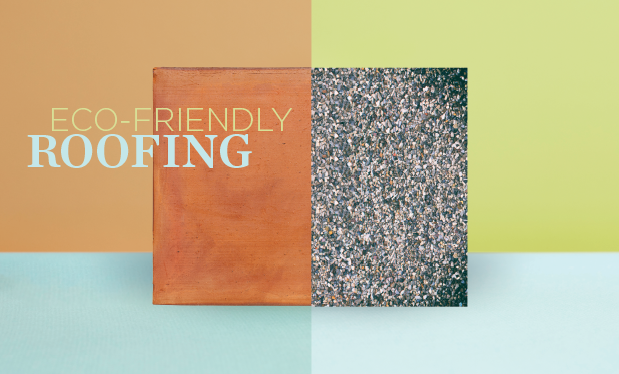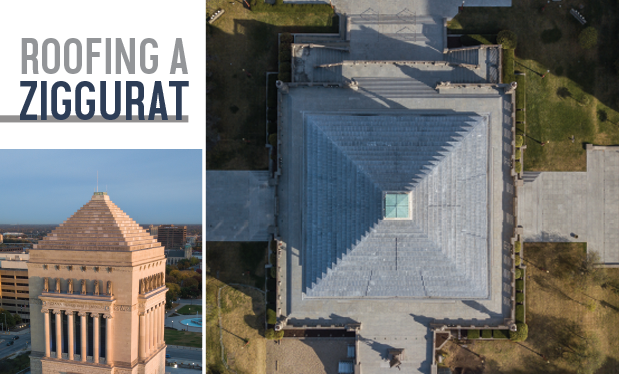After more than eight years in development, in December 2020 ASTM International published the first U.S. product standard applicable to synthetic, steep-slope underlayment products. If you are involved with the design or installation of steep-slope roof systems, I encourage you to become familiar with this standard and begin to use it when specifying and procuring steep-slope underlayment products.
ASTM D8257
ASTM D8257, “Standard Specification for Mechanically Attached Polymeric Roof Underlayment Used in Steep Slope Roofing,” addresses mechanically attached synthetic underlayment used in steep-slope roof systems.
The standard defines polymeric underlayment as a sheet material primarily composed of polymers for use as a secondary water-shedding layer on steep-slope roofs when installed below a primary roof covering.
The standard’s objective is to provide a finished product that will be used as a water-shedding underlayment layer before and after the installation of a primary steep-slope roof covering.
The standard stipulates the synthetic underlayment will be:
- Supplied in roll form
- Uniform in thickness and appearance
- Free of visible defects such as holes, ragged or untrue edges, breaks, cracks, tears and protruding edges of reinforcement
- Designed to have a surface that provides traction and slip resistance to the applicator
A note in the standard indicates though there is no agreed upon test method for determining the slipperiness of installed roofing products, several methods for assessing relative slipperiness of surfaces are available. The standard intends to ensure whatever evaluation method is used, the friction coefficient or resistance to slipping of the surface should be at least equal to that of asphalt-saturated shingle underlayment tested under the same conditions of temperature and wetness.
ASTM D8257’s Table 1-Requirements for Polymeric Roof Underlayments provides specific physical requirements for synthetic underlayment. Test requirements, test methods and conditions of acceptance are provided. Unrolling, pliability, water vapor and liquid water transmission, linear dimensional change, tensile and tear strengths, fastener pull-through resistance, hydrostatic resistance, thermal cycling and laboratory- accelerated weathering are included in Table 1. Unrolling, pliability, thermal cycling and laboratory-accelerated weathering testing should exhibit no visible damage after testing.
Tensile strength, tear strength, fastener pull-through resistance and hydrostatic resistance are tested as received and after thermal cycling and after laboratory-accelerated weathering. A note in the standard indicates testing after laboratory-accelerated weathering is intended to simulate the effects solar radiation, heat and moisture have on underlayment during the period an underlayment may be exposed to the elements before the application of the primary roof covering. The 500-hour duration for laboratory weathering included in the standard reportedly is equivalent to about 30 days of field exposure.
Products complying with ASTM D8257 must be plainly marked with the manufacturer’s name, brand name and ASTM D8257 designation unless otherwise specified. Rolls should be securely wrapped or banded in a substantial manner to prevent shifting of the material and permit normal handling.
An ASTM D8257-compliant synthetic underlayment product’s water vapor transmission value should be provided in the manufacturer’s product literature on a product-specific basis.
Implementation
Manufacturers and suppliers of synthetic underlayment products are testing their products based on this new standard, and I expect to see ASTM D8257-compliant products in the marketplace within the next several months.
Because of its recent publication, ASTM D8257 is not yet included in most building codes, including the International Building Code,® 2021 Edition or International Residential Code,® 2021 Edition. A code change proposal adding ASTM D8257 likely will be accepted and first appear in the 2024 I-Codes.
When specifying or using synthetic underlayment products, I encourage you to use products complying with ASTM D8257. You also should be knowledgeable of the specific product’s water vaper transmission value (perm rating).
In support of the development of ASTM D8257, NRCA tested several synthetic underlayment products and found some products have relatively high perm ratings while others have low perm ratings. Put another way, some synthetic underlayments are vapor-open, and other products with low perm ratings may function as vapor retarders.
When selecting a synthetic underlayment, designers should seek products with a perm rating commensurate with the designers’ assembly designs. From a water vapor transmission standpoint, a synthetic underlayment with a relatively high perm rating should perform similarly to a conventional asphalt-saturated underlayment.
Additional information about underlayment for steep-slope roof systems is included in The NRCA Roofing Manual: Steep-slope Roof Systems—2021. Information about water vapor transmission through roofing materials is included in the Condensation and Air-leakage Control section of The Roofing Manual: Architectural Metal Flashing and Condensation and Air Leakage Control—2018.
MARK S. GRAHAM is NRCA’s vice president of technical services.
For additional information about synthetic underlayments, see “High-tech protection.”



